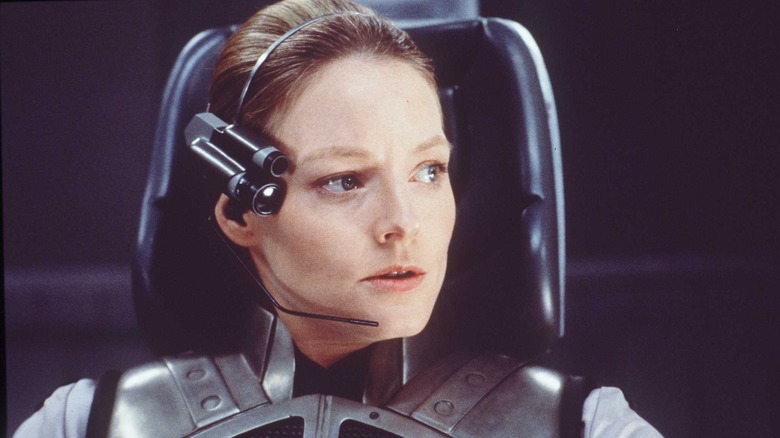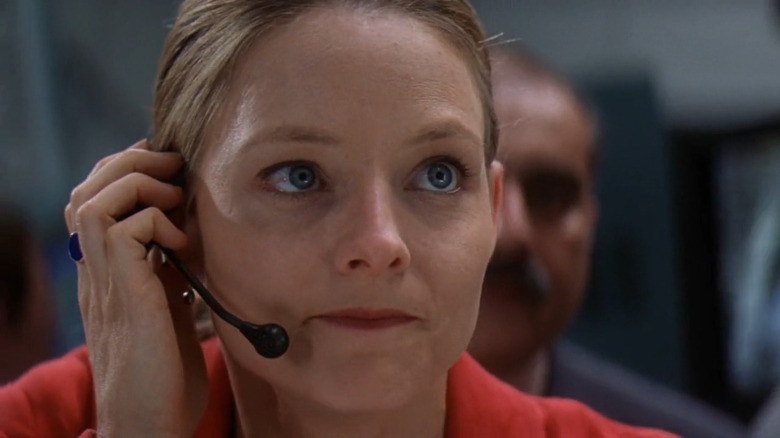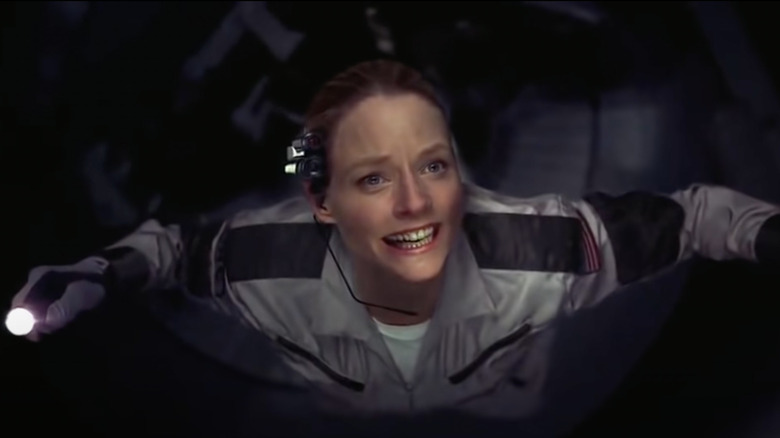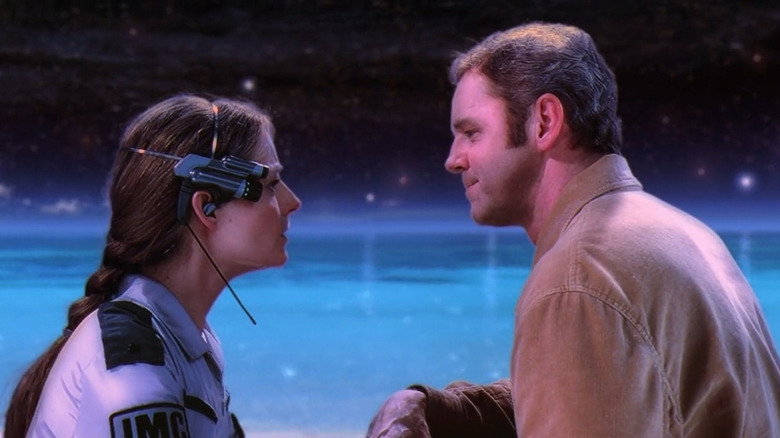The Biggest Challenge Contact Faced Was Coming Up With An Ending
According to Vulture, Carl Sagan and his wife, Ann Druyan, spent the early '80s writing a film treatment based on Sagan's 1985 novel, "Contact." After cycling through a few different production companies, a slew of screenwriters, and two directors, the film finally made it to the big screen in 1997. Starring Academy Award winners Jodie Foster and Matthew McConaughey, the movie was a moderate success, but there were a lot of mixed feelings about the film's ending.
At the beginning of the movie, Ellie Arroway (Foster) is a hard-core skeptic about anything that can't be verified by science, so she spends all her time listening to the skies for proof of intelligent life. Towards the end of the film, she finally encounters extraterrestrials, but cannot provide proof of the experience. Ultimately, Arroway and the audience must choose between faith or science, and a lot of viewers didn't appreciate the ambiguous ending. The backlash didn't come as a huge surprise to the crew of "Contact," whose biggest struggle was finding an appropriate ending for the movie.
Struggling with a female scientist
As Vulture reported, screenwriters struggled with the "Contact" story throughout the late '80s and '90s. Sagan and Druyan wrote Arroway as a very serious skeptic, who dedicated her life to science. Hollywood didn't understand the character and constantly tried to give the female character a more conventional life goal. For example, Peter Guber thought Arroway should search for her long-lost son instead of alien life, and he wasn't the only one to attempt this. Seven other writers also took a similar approach, refusing to accept a woman might value knowledge over a family or romantic relationship.
It seems the screenwriters were trying to stop the fact-loving scientist from coming off as cold or unrelatable, but they got lost in misogynistic expectations for a woman's life. Eventually, another writer, James V. Hart, collaborated with Sagan. Together, they were able to find Ellie's character motivation and sensitive side in her relationship with her late father (David Morse). Of course, the curious scientist in Arroway would love to find proof of extraterrestrial life, but the little girl who lost her only parent simply wants proof that she isn't alone. Hart's changes strengthened the character's motivation to find faith, hope, and connection, which led to a controversial ending.
That ending
At the end of the film, Arroway travels through space, meets extraterrestrials, and finally confirms Earthlings aren't alone in the universe. Or does she?
In reality, Arroway simply believes she experiences space travel and a conversation with an alien, but has no scientific proof to back it up. For a moment, it seems that science has lost to faith, but it's revealed that Arroway's headcam recorded 18 hours of staticky footage in a fraction of a second. This wishy-washy ending was a disappointment to a lot of viewers and some of the crew.
During the tumultuous scriptwriting, several different endings were offered up for the film, which included one by Steven Spielberg. In an interview with Vulture, Co-writer Michael Goldenberg recalled:
"It was going to be the third of his trilogy of science fiction: 'Close Encounters,' 'E.T.,' and then 'Contact.' One idea was that Ellie would have this big speech at the end about if only people could see what she saw, and the aliens heard that, and at the end, they put on this light show that was basically the view Ellie had from the center of the galaxy. It didn't work."
Goldenberg decided it was best to stick with an ambiguous ending, but his co-writer disagrees. Hart told Vulture that he wanted to end the film with Sagan's vision:
"I don't like the ending because it wasn't Carl's ending. Carl was very specific to me when we were working that he absolutely wanted faith to be an issue, but ultimately what really happened to Ellie and the galaxy could be proven and it was real. It wasn't ambiguous the way it is at the end of the film."
Why the ending works for some
On the surface, the film explores the age-old conflict between faith and science, and spends the majority of its time arguing in favor of the former, so it's understandable why viewers felt abandoned by the mysterious ending. If the film wanted to satisfy its audience, it would have offered proof that Arroway encountered aliens or that she hallucinated it, but the ending wasn't chosen to satisfy the viewers. Instead, the ending had to complete Arroway's character journey from a hardened skeptic to a scientist with faith and hope. Druyan explained:
"We wanted [Arroway] to be someone who would never believe a person who claims to have an extraordinary experience without evidence and then to become that person."
If viewers focus on the science vs. faith argument of the movie, then the ending will leave them unsatisfied. This is why it was so important for scriptwriters to understand Arroway and make her journey relatable to the audience. If viewers connect with the scientist, and understand the hope and faith she lost as a child, then watching her find it again is a satisfying ending. However, if they don't understand her story or the deep ways her father's death affected her, then the ending will feel like a cop-out.
Ultimately, "Contact" isn't about proving aliens' existence or proving science's superiority, it's about Ellie Arroway's struggle to regain faith, hope, and connection.



